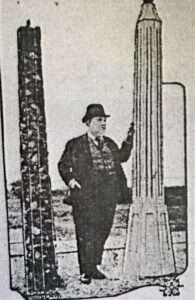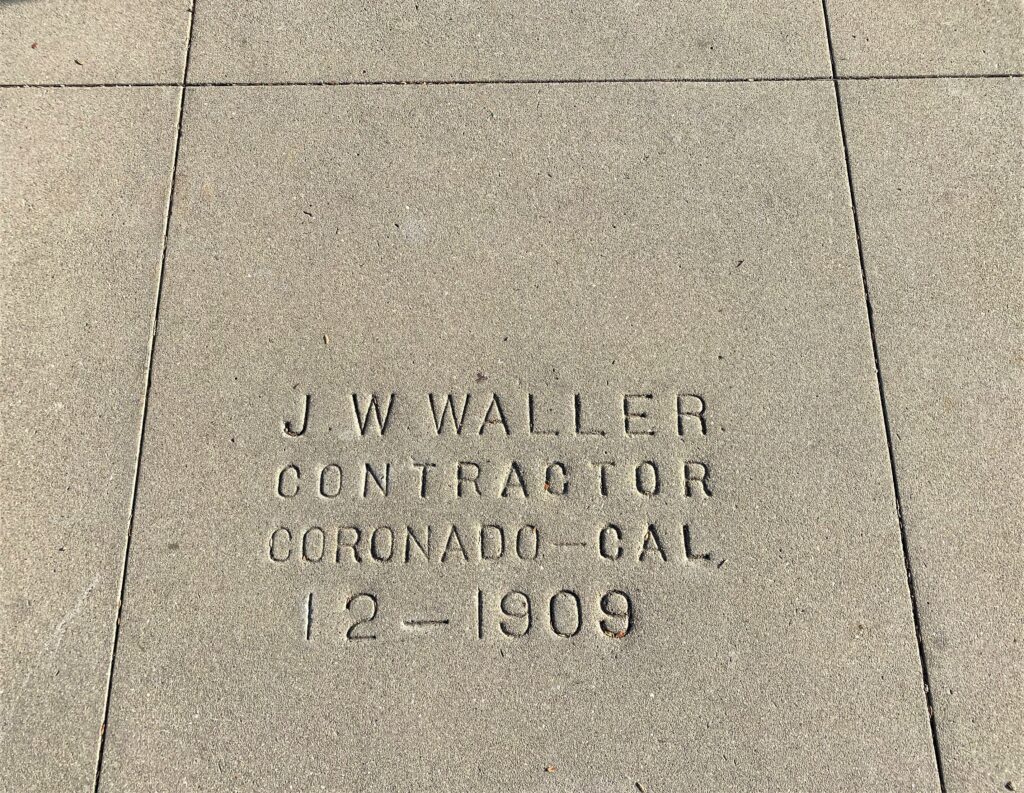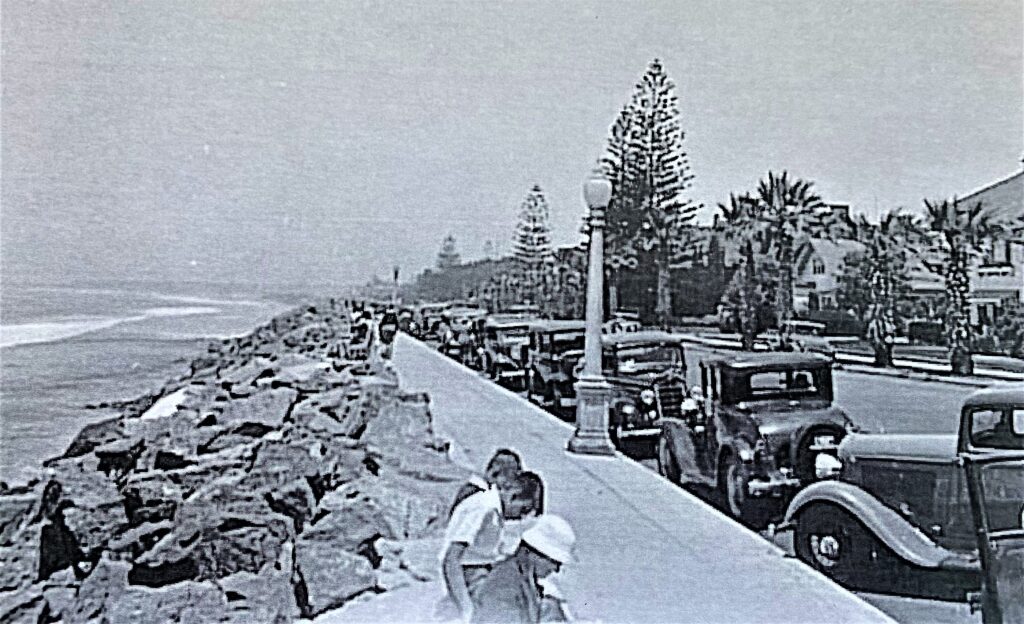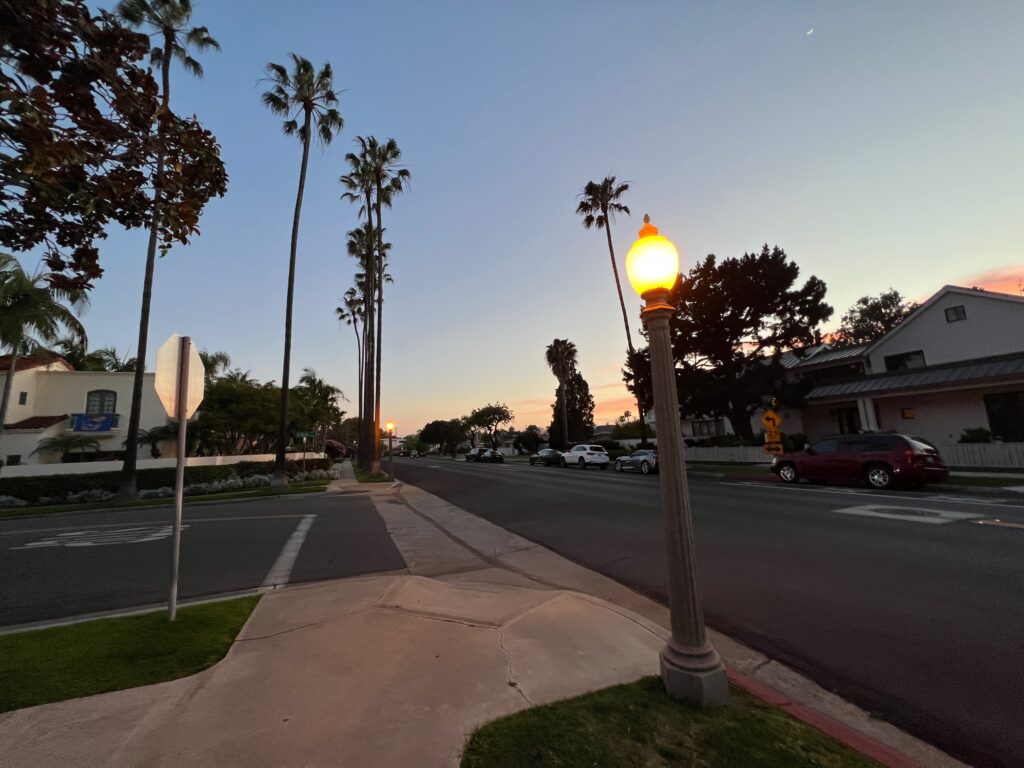
If you slow down and wander the streets of Coronado, you will find many historic characteristics that enhance the quaint village ambiance. Some date back to the beginning, in the late 1800s, from its origin when Coronado quickly developed, as illustrated by the fact that it took Elisha Babcock, Jr. and Hampton Story just three weeks to bring laborers to begin work after they inked the deal to purchase the Coronado peninsula. Other architectural details have been added through the years from scored sidewalks, memorable buildings, distinctive art, bronze historic designation plaques, antique lamp posts, and so much more. It’s amazing what you can discover if you keep your eyes wide open.

The Coronado Historical Association (CHA) is an invaluable resource for finding out about Coronado’s storied past. I started on the quest to research the origin of the interesting antique lamp posts that seem to welcome you to 9th Street from Alameda Boulevard. Finding that there weren’t many details in their archives on the subject, I reached out to several long-time residents who were also stymied as to the lamp posts’ origin. CHA pointed me to the streetlamps on Ocean Blvd. and felt that the ones on Alameda were most likely of the same era, and used there because that was the edge of town in the 1920s. Alameda was previously known as K Avenue and was the last perimeter street in the village, adjacent to where the country club area is today, aptly named for the Coronado Country Club commissioned in 1905 by J.D. Spreckels. It included a racetrack, tennis courts, golf course, grandstand, and exclusive members’ club. The adjacent Coronado Polo Club was well known for premier polo events. Interestingly, polo also extended to the beach at the Hotel del Coronado, with Charlie Chaplin as one of its most famous players.

When you look up walking around town you can admire the preserved trees, and when you glance down you can find scored sidewalks, with dates stamped back to the early 1900s. In recent years, nonagenarian and long-time resident Julia Viera advocated to City Council for the continued scoring of sidewalks, which has not always been done, when replaced on new construction projects. The council agreed with her to continue to preserve this charming tradition.
There are more than 85 designated historical sites throughout Coronado, and it is interesting to note some of the unique businesses that have come and gone, like the ostrich farm on A Avenue, between 8th and 9th streets, which was run by E. J. Johnson in 1887 as a tourist attraction and a source for feathers. Most people know the history of Tent City, which was located next to The Del for nearly 40 years. But did you know that a major motion picture studio operated here in 1915?
Even the naming of the streets in Coronado has interesting twists. When the residential street grid was established, the first idea was to use Spanish names, of which there are a few like Alameda, but using alphabetical streets north and south and numerical streets east and west made navigating the village easier. Orange, Olive, and Palm Avenues were named for the trees planted on them at the time. In 1924, the Board of Trustees renamed 1st Street “Cabrillo Esplanade,” but it only lasted three years and was reversed by a public petition.

You can get lost in all the amazing history documented at CHA and they are great resource as a research center with an extensive photo collection of more than 20,000 images that can also be searched online.
Now back to my original quest for the backstory of the Alameda lamp posts. I discovered through CHA that in 1913, the City Council, sometimes called the “Harmonious Meeting of City Founders,” discussed ornamental street lamp posts spaced about 250 feet apart, for the esplanade on Ocean Blvd. Then in 1916, the council received a bid for $20 each for ornamental lamp posts made out of cement that imitated stone. The council vetoed the proposal, but asked for a plan and costs to also install them on Glorietta Blvd. In 1924, the council considered streetlights for Orange Avenue, from Ninth Street to the Ferry Landing.

This is just a sampling of the interesting Coronado historical facts revealed in my research. If you have any additional insights on my original question of the lineage of the three lamp posts on Alameda Boulevard, please reach out and let us know. We would also welcome any other little known historical details that make Coronado unique, so we can share with our readers.
Check out the new CHA GEM Walking App available in the Apple App or Google Play Stores and their website at https://coronadohistory.org/.




